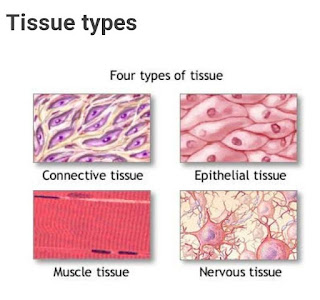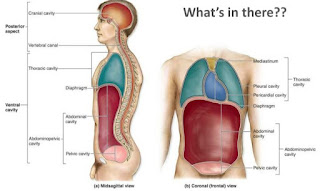System and cavities of the human body
Human body organ systems
The human body is made up eleven organ systems that work with one another ( interdependantly ). These systems integumentary system, skeletal system, muscular system lymphatic system, respiratory system, digestive system, nervous system,endocrine system, cardiovascular system, urinary system and reproductive system, we will briefly discuss the major functions of each Organ system below.
1. Integumentary system :
( Skin, hair, nails ) Forms the external body covering and protects deeper tissue from injury. Houses cutaneous receptors, sweat glands, oil glands and synthesizes vitamin D.
2. Skeletal system :
( Bones, joints) supports and protects the Organ of the baby. Provides a framework to muscles ( movement ) .bones also store minerals and create blood cells.
3. Muscular system :
( Skeletal muscles ) Maintains posture and produces movement (locomotion ) produces heat.
4. Lymphatic system :
( red bone marrow,thymus, lymphatic vessels thoracic duct, spleen, lymph node ) House of white blood cells ( lymphocytes ) involved in in immunity. Returns leaked fluid from blood vessels to the blood and disposes debris within the lymphatic stream.
5. Respiratory system:
( Nasal cavity, pharynx, larynx, trachea, bronchus, lung ) Removes carbon dioxide and continually blood with oxygen. Gaseous exchanges occur in the respiratory system ( lungs ).
6. Digestive system :
(Oral cavity oesophagus, stomach, small intestine, large intestine, rectum, ( anus ) Breaks down food to be absorbed and eliminates indigestible waste.
7. Nervous systems:
( Brain,spinal cord, nerves ) control system of the baby, responds to internal and external changes, activates muscles and glands.
8. Endocrine system:
( Pinned gland, pituitary gland, thyroid gland, thymus, adrenal gland, pancreas, ovary, testis ) glands form the endocrine system and secrete hormones that regulate many processes like growth, metabolism and reproduction.
9. Cardiovascular system:
( Heat, blood vessels) the heart pumps blood and blood vessels transport it. Blood carries oxygen, carbon dioxide, nutrients, waste and more throughout the body.
10. Urinary system:
(Kidney, ureter, urinary bladder, urethra) Eliminates nitrogenous wastes from the body. Regulates acid - base electrolyte and water balance of blood.
11. Reproductive system:
a. Male ( prostate gland, penis, testis , scrotum, ductus reference)
B. Female (Mammary glands, over uterus , vagina, uterine tube)
The main function of the reproductive system is to produce offspring. Sex hormones and Ovaries produce female sex hormones and eggs .other female reproductive structures serve as sites of fertilization and development. For instance, the mammary glands produce milk for the newborn.
Translate: Hindi
मानव शरीर अंग प्रणाली
मानव शरीर ग्यारह अंग प्रणालियों से बना है जो एक दूसरे के साथ काम करते हैं (अन्योन्याश्रित रूप से)। ये सिस्टम पूर्णांक प्रणाली, कंकाल प्रणाली, पेशी प्रणाली लसीका प्रणाली, श्वसन प्रणाली, पाचन तंत्र, तंत्रिका तंत्र, अंतःस्रावी तंत्र, हृदय प्रणाली, मूत्र प्रणाली और प्रजनन प्रणाली, हम संक्षेप में नीचे प्रत्येक अंग प्रणाली के प्रमुख कार्यों पर चर्चा करेंगे।
1. एकीकृत प्रणाली:
(त्वचा, बाल, नाखून) बाहरी शरीर को ढंकता है और चोट से गहरे ऊतकों को बचाता है। हाउस त्वचीय रिसेप्टर्स, पसीने की ग्रंथियों, तेल ग्रंथियों और विटामिन डी का संश्लेषण करता है।
2. कंकाल प्रणाली:
(हड्डियों, जोड़ों) बच्चे के अंग का समर्थन और सुरक्षा करता है। मांसपेशियों (आंदोलन) को एक ढांचा प्रदान करता है। हड्डी भी खनिजों को संग्रहीत करते हैं और रक्त कोशिकाओं का निर्माण करते हैं।
3. पेशी प्रणाली:
(कंकाल की मांसपेशियाँ) मुद्रा बनाए रखती हैं और गति पैदा करती हैं (हरकत) गर्मी पैदा करती है।
4. लसीका प्रणाली:
(लाल अस्थि मज्जा, थाइमस, लसीका वाहिकाओं वक्ष वाहिनी, प्लीहा, लिम्फ नोड) प्रतिरक्षा में शामिल सफेद रक्त कोशिकाओं (लिम्फोसाइट्स) का घर। रक्त वाहिकाओं से रक्त में तरल पदार्थ लौटाता है और लसीका प्रवाह के भीतर मलबे का निपटान करता है।
5. श्वसन प्रणाली:
(नाक गुहा, ग्रसनी, स्वरयंत्र, श्वासनली, ब्रोन्कस, फेफड़े) कार्बन डाइऑक्साइड और ऑक्सीजन के साथ लगातार रक्त निकालता है। गैसीय आदान-प्रदान श्वसन प्रणाली (फेफड़े) में होता है।
6. पाचन तंत्र:
(मौखिक गुहा घेघा, पेट, छोटी आंत, बड़ी आंत, मलाशय, (गुदा) भोजन को अवशोषित करने के लिए टूट जाता है और अपचनीय अपशिष्ट को समाप्त करता है।
7. तंत्रिका तंत्र:
(मस्तिष्क, रीढ़ की हड्डी, तंत्रिकाओं) बच्चे की नियंत्रण प्रणाली, आंतरिक और बाहरी परिवर्तनों का जवाब देती है, मांसपेशियों और ग्रंथियों को सक्रिय करती है।
8. अंत: स्रावी प्रणाली:
(पिन की हुई ग्रंथि, पिट्यूटरी ग्रंथि, थायरॉयड ग्रंथि, थाइमस, अधिवृक्क ग्रंथि, अग्न्याशय, अंडाशय, वृषण) ग्रंथियां अंतःस्रावी तंत्र का निर्माण करती हैं और हार्मोन का स्राव करती हैं जो वृद्धि, चयापचय और प्रजनन जैसी कई प्रक्रियाओं को नियंत्रित करती हैं।
9. हृदय प्रणाली:
(हीट, रक्त वाहिकाएं) हृदय रक्त पंप करता है और रक्त वाहिकाएं इसका परिवहन करती हैं। रक्त पूरे शरीर में ऑक्सीजन, कार्बन डाइऑक्साइड, पोषक तत्व, अपशिष्ट और अधिक वहन करता है।
10. मूत्र प्रणाली:
(किडनी, मूत्रवाहिनी, मूत्राशय, मूत्रमार्ग) शरीर से नाइट्रोजनयुक्त कचरे को खत्म करता है। एसिड को नियंत्रित करता है - बेस इलेक्ट्रोलाइट और रक्त का जल संतुलन।
11. प्रजनन प्रणाली:
ए। पुरुष (प्रोस्टेट ग्रंथि, लिंग, वृषण, अंडकोश, डक्टस संदर्भ)
बी। महिला (स्तन ग्रंथियां, गर्भाशय, योनि, गर्भाशय ट्यूब)
प्रजनन प्रणाली का मुख्य कार्य संतान उत्पन्न करना है। सेक्स हार्मोन और अंडाशय महिला सेक्स हार्मोन और अंडे का उत्पादन करते हैं। महिला प्रजनन संरचनाएं निषेचन और विकास की साइटों के रूप में काम करती हैं। उदाहरण के लिए, स्तन ग्रंथियां नवजात शिशु के लिए दूध का उत्पादन करती हैं।


Comments
Post a Comment